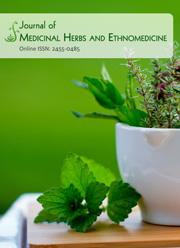Phytochemical analysis of fifty (50) selected plants found in the University Botanic Garden, Maseno, Kenya for their chemotaxonomic values.
DOI:
https://doi.org/10.19071/jmhe.2015.v1.2906Abstract
Qualitative phytochemical analysis of 50 plants, five each from 10 selected families is presented. The objective of the study was to analyze phytochemical constituents of 5 selected plants in each of the ten families for chemotaxonomic values. The ten plant families were selected based on their high plant frequency of occurrence within the botanic garden. The powdered crude samples of the leaves of the fifty plants were subjected to phytochemical analysis using standard experimental procedures. The ethanoic leaf extracts from the plants were tested for the presence of six phytochemicals. From the research, it is evident that saponins are the most abundant phytochemicals among the plants whose leaf extracts were analyzed. They account for 32.43 %, followed by alkaloids (27.03 %) then flavanoids (14.86 %), steroids (12 .16%), terpenes (10.81%) and anthraquinones (2.70 %) respectively. Chi-square analysis revealed that plant families in which the plants are grouped are dependent on the phytochemicals present in plants.Downloads
Download data is not yet available.
Published
09-12-2015
How to Cite
J.C. Onyango, S. O. (2015). Phytochemical analysis of fifty (50) selected plants found in the University Botanic Garden, Maseno, Kenya for their chemotaxonomic values. Journal of Medicinal Herbs and Ethnomedicine, 1, 130–135. https://doi.org/10.19071/jmhe.2015.v1.2906
Issue
Section
REGULAR ISSUE ARTICLES



 .
.